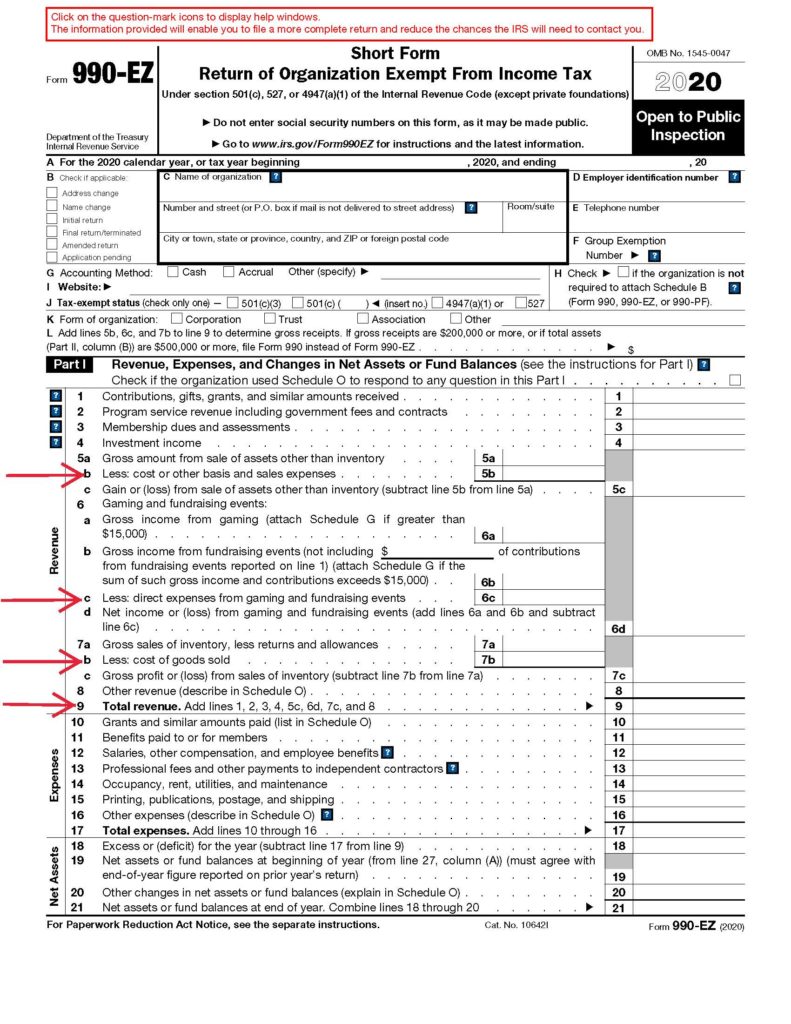The Paycheck Protection Program closed in May 2021. This information has been archived for reference only.
Non-profits and similar organizations are eligible for first and second Paycheck Protection Program (PPP) loans. However, they must follow separate guidance than for profit businesses due to financial reporting differences.
If you are applying for PPP on behalf of a nonprofit organization, this summary can help you understand what types of non-profits are eligible, how to determine your loan amount, and how to calculate the required 25% revenue reduction for second PPP loans.
Is my nonprofit organization eligible for PPP?
A wide variety of nonprofit organizations are eligible for PPP. These include:
- Nonprofit 501(c)(3) organizations
- 501(c)(19) veterans organization
- Nonprofit news organizations
- 501(c)(6) organizations
- Destination marketing organizations, such as tourism, convention, and visitor bureaus
- All other tax-exempt nonprofit organizations (with the exception of 501(c)(4)) that are not engaged in lobbying activities.
Nonprofits must comply with the general requirements for first PPP loans and second PPP loans. Organizations that receive more than 15% of their revenues from lobbying activities are not eligible for PPP.
If your nonprofit meets these requirements, you can apply for a first or second PPP loan.
How to calculate a PPP loan amount for a nonprofit
The loan calculation for nonprofits and similar organizations is the same as most for profit organizations—you can borrow up to 2.5x of the average monthly payroll for your organization. You can reference our detailed guide on calculating PPP loan amounts for nonprofits and use our Ultimate PPP Loan Calculator to easily calculate your loan amount.
When calculating, you’ll include all payroll costs (typically salaries, employer paid health benefits, employer paid retirement benefits) for either 2019 or 2020, then divide by 12 to obtain your monthly payroll cost. This amount will be multiplied by 2.5 to arrive at your maximum loan amount.
As with for profit businesses, any compensation to an employee in excess of $100,000 must be subtracted from payroll costs.
How do nonprofits and similar organizations calculate the 25% revenue reduction requirement for a PPP loan?
Start by familiarizing yourself with the general process by referencing our guide for calculating a 25% revenue reduction for PPP. Nonprofits earn money differently than for profit businesses, and the SBA rules for PPP accommodate this.
As a nonprofit, you can include the following costs in your gross receipts figure:
- The gross amount received as contributions, gifts, grants, and similar amounts without reduction for the expenses of raising and collecting such amounts
- The gross amount received as dues or assessments from members or affiliated organizations without reduction for expenses attributable to the receipt of such amounts
- Gross sales or receipts from business activities (including business activities unrelated to the purpose for which the organization qualifies for exemption, the net income or loss from which may be required to be reported on Form 990-T)
- The gross amount received from the sale of assets without reduction for cost or other basis and expenses of sale, and
- The gross amount received as investment income, such as interest, dividends, rents, and royalties.
Please note that gross receipts do not include the amount of any forgiven First Draw PPP Loan or any EIDL advance.
If you are using annual tax returns to calculate the revenue reduction, the calculation depends on the tax return type – IRS Form 990 or IRS Form 990-EZ.
If you are using IRS Form 990: Add lines 6b(i), 6b(ii), 7b(i), 7b(ii), 8b, 9b, 10b, and 12 (column (A)) of Part VIII – Page 9.

If you are using IRS Form 990-EZ: Add lines 5b, 6c, 7b, and 9 of Part I.

Ready to apply for the Paycheck Protection Program?
Nonprofits provide essential services to the community and
employ individuals just as for profit businesses do. A Paycheck Protection
Program loan can help you maintain your nonprofit’s operations and ensure that
your services are available to the community in the future. If you are ready to apply for PPP,
get started today.
